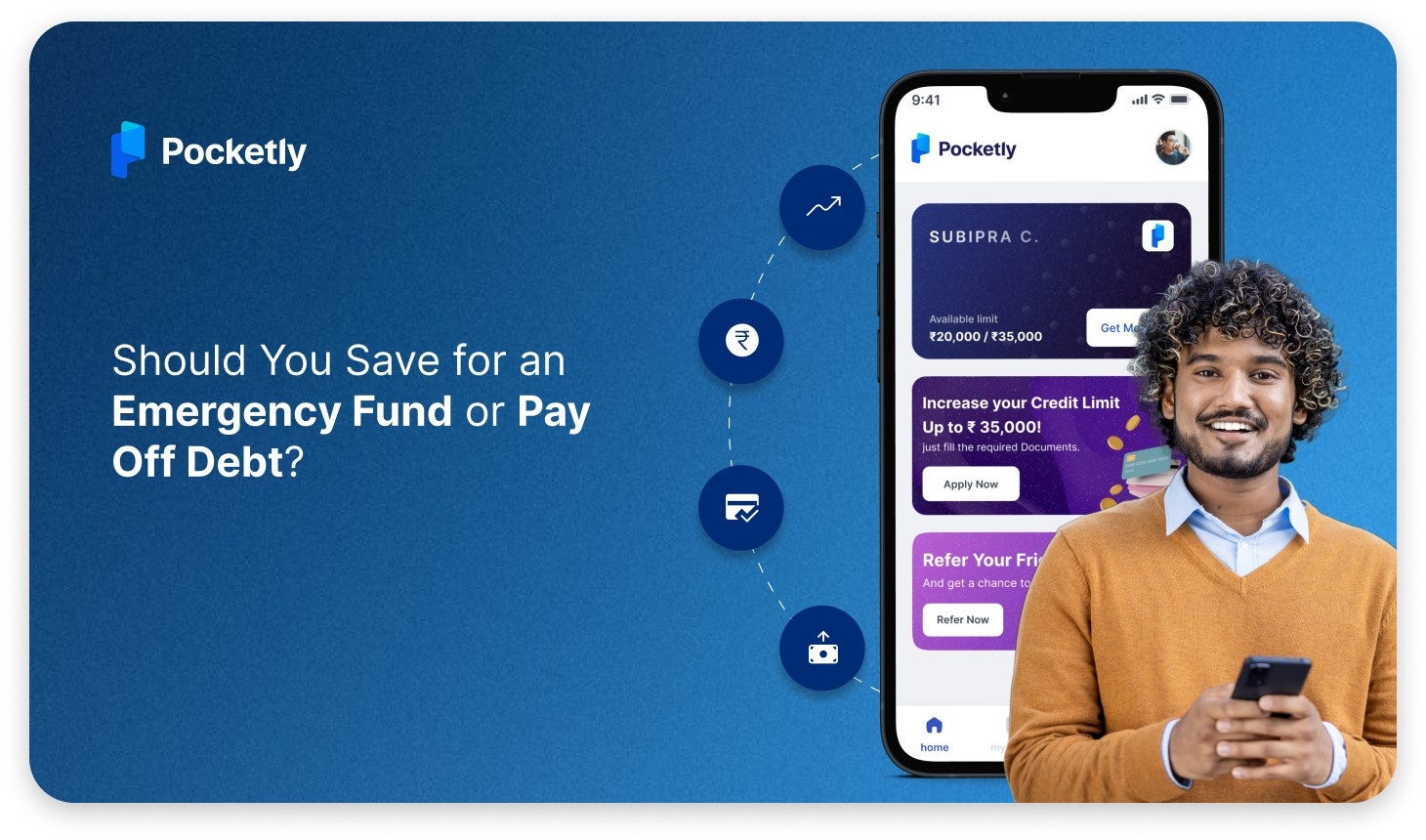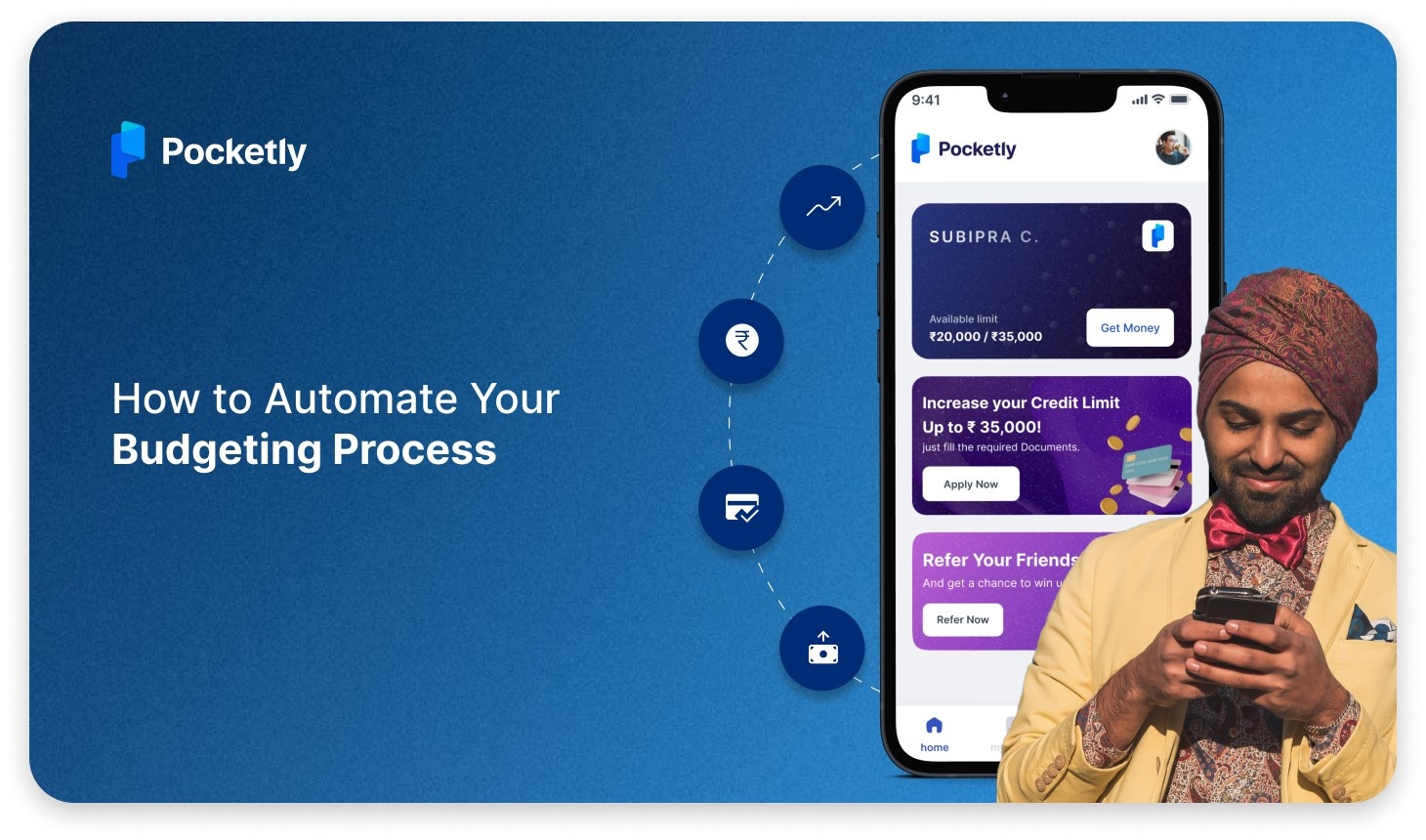
You’re out shopping for a new laptop that you desperately need for work, but the price tag is way beyond your monthly budget. Or maybe a medical emergency has come up, and you need to arrange funds immediately. In moments like these, taking a loan can seem like the best option—but should you convert the amount into a Credit Card EMI or apply for a Personal Loan?
Both options let you borrow money and repay in instalments, but they work in very different ways when it comes to interest rates, repayment flexibility, and overall cost. Choosing the right one depends on how much money you need, how quickly you need it, and how long you plan to take for repayment.
Let’s break it down so you can make a smart financial decision that works best for your situation.
What is Credit Card EMI?
Credit Card EMI allows you to convert large purchases or outstanding dues into manageable monthly instalments, making it easier to afford high-value expenses without straining your budget. Instead of paying the entire amount upfront, you can split it over a set period, usually ranging from 3 to 24 months.
Unlike a personal loan, a Credit Card EMI is directly linked to your card’s available credit limit, meaning you don’t need to apply for a separate loan. However, it typically comes with higher interest rates and additional processing fees, which vary from lender to lender.
Key Features of Credit Card EMI
- Loan limit tied to your credit card limit – The amount you can convert into EMI depends on your available credit limit, restricting higher-value purchases.
- Instant access to credit – No need for additional loan approval; you can instantly opt for EMI conversion at checkout or through your bank.
- Higher interest rates – While convenient, Credit Card EMIs usually come with higher interest rates compared to personal loans.
- Additional charges – Some banks impose processing fees and GST on interest, increasing the total repayment amount.
Best for: Short-term financing of purchases like electronics, travel, or emergency expenses where you need quick liquidity.
Purpose of Credit Card EMI
- Helps manage large purchases – Ideal for buying expensive gadgets, appliances, travel bookings, or medical bills without paying the full amount at once.
- Quick access to credit – No separate loan application is required; simply convert transactions into EMIs instantly.
- Flexible repayment options – Choose a tenure that suits your budget, ranging from a few months to over a year.
- Avoids sudden financial strain – Reduces the burden of large, one-time expenses by breaking them into smaller monthly payments.
- Convenient for emergencies – Provides immediate funds for urgent expenses when cash reserves are low.
While Credit Card EMIs offer convenience, they often come with higher interest rates and hidden charges, making it essential to compare costs before opting for one.
What is a Personal Loan EMI?
A Personal Loan EMI is a structured repayment plan where you repay a fixed amount monthly over a set period. Unlike Credit Card EMIs, a personal loan provides a lump sum upfront, making it ideal for large expenses like medical emergencies, home renovations, education, or debt consolidation. These loans typically come with fixed interest rates and longer repayment tenures, making them more manageable for planned financial needs.
Key Features of Personal Loan EMI
- Higher borrowing limits based on credit score and income – Loan amounts depend on income stability, credit history, and repayment capacity, making it suitable for big financial commitments.
- Disbursed as a lump sum post-approval – Unlike Credit Card EMIs, a personal loan provides the full sanctioned amount upfront instead of being linked to transactions.
- Fixed interest rates and structured monthly repayments – Interest rates are generally lower than Credit Card EMIs, making them more cost-effective for long-term borrowing.
- Requires more documentation – Needs income proof, identity verification, and employment details, leading to a slightly longer approval process.
Purpose of Personal Loan EMI
- Ideal for large expenses – Suitable for funding medical bills, weddings, education, or home improvements.
- Better suited for debt consolidation – Helps in repaying multiple debts with lower interest rates and structured repayments.
- Long-term affordability – Offers a predictable EMI structure that makes financial planning easier.
- Higher loan amounts available – Can provide substantially larger funds compared to Credit Card EMIs.
- More cost-effective for planned borrowing – Lower interest rates make it cheaper than using a credit card for high-value transactions.
A Personal Loan EMI is a great choice for those who need larger loan amounts with fixed repayment plans, offering a more structured and affordable borrowing experience.
Difference Between Personal Loan EMI and Credit Card EMI
When borrowing money, choosing between a Personal Loan EMI and a Credit Card EMI depends on factors like loan amount, interest rates, repayment tenure, and eligibility requirements. While both options allow for monthly instalment-based repayments, they serve different purposes and come with distinct features.
Below is a detailed comparison to help you decide which option fits your financial needs best.
| Feature | Personal Loan EMI | Credit Card EMI |
|---|---|---|
| Loan Amount | Higher limits, ranging from ₹50,000 to ₹40 lakh | Limited to the available credit card limit |
| Interest Rate | Lower, usually between 10% - 24% per annum | Higher, typically 12% - 36% per annum |
| Repayment Tenure | Long-term: 12 months to 5 years | Short-term: 3 months to 24 months |
| Approval Process | Requires application, document verification, and credit assessment | Instant approval, no extra documentation required |
| Disbursal Time | Can take a few hours to a few days | Instant conversion into EMI |
| Documentation Required | Income proof, ID proof, address proof, and employment verification | No additional documents needed if you already have a credit card |
| Usage | Best for large, planned expenses like medical bills, home renovation, or education | Ideal for converting high-value purchases into smaller payments |
| Eligibility Criteria | Depends on credit score, income stability, and employment status | Must have an active credit card with a sufficient limit |
| Impact on Credit Score | Can improve your score if repaid on time, but defaults affect it negatively | Utilisation of a high credit limit may negatively impact your credit score |
| Flexibility in Repayment | Fixed EMIs with structured repayment plans | Some banks allow early closure, but with prepayment charges |
| Additional Charges | Processing fees (1% - 4%), late payment penalties | Processing fees (1% - 3%), GST on interest, foreclosure charges |
Similarities Between Personal Loan EMI and Credit Card EMI
- Both involve fixed monthly instalments (EMIs) for structured repayments.
- A good credit score helps secure better interest rates and terms.
- Repayment history affects credit scores positively or negatively.
- Processing fees and charges apply in both cases.
- Used for large expenses like medical bills, travel, or home improvements.
- Offer flexible repayment tenures based on borrower preference.
Overlaps Between Personal Loan EMI and Credit Card EMI
- Both can be used for emergencies and urgent financial needs.
- Approval depends on credit history and income stability.
- Processing time varies—Credit Card EMIs are instant, while some personal loans are also quickly disbursed.
- Prepayment may incur charges, depending on the lender.
- Repayment history impacts future loan approvals and borrowing capacity.
Understanding these key differences will help you make an informed financial decision based on your borrowing needs, repayment capacity, and long-term financial goals.
Factors Influencing the Choice Between Personal Loan EMI and Credit Card EMI
Several factors determine whether a Personal Loan EMI or a Credit Card EMI is the better choice for your financial needs. Understanding these factors can help you make a cost-effective and manageable borrowing decision.
- Loan Amount – Personal loans allow higher borrowing limits (up to ₹40 lakh), while Credit Card EMIs are limited to the card’s available credit.
- Interest Rates – Personal loans usually have lower fixed rates, whereas Credit Card EMIs have higher, variable rates that may fluctuate.
- Repayment Tenure – Personal loans offer longer repayment periods (up to 5 years), while Credit Card EMIs are shorter-term (3 to 24 months).
- Processing Speed – Credit Card EMIs are instant, while personal loans may take a few hours to days for approval.
- Eligibility Criteria – Personal loans require income proof and credit history checks, while Credit Card EMIs are based on your existing credit limit.
- Additional Charges – Both options may include processing fees, GST on interest, and prepayment penalties, impacting the total cost.
- Impact on Credit Score – High utilisation of a credit card limit may lower your credit score, while a personal loan with timely repayments can improve it.
By understanding these factors, you might be able to choose the most suitable borrowing option based on your financial goals, repayment capacity, and urgency of funds.
Choosing Between Personal Loan EMI and Credit Card EMI
Selecting between a Personal Loan EMI and a Credit Card EMI depends on your financial needs, repayment ability, and loan purpose. While both offer structured repayments, they cater to different borrowing scenarios.
- Opt for a Personal Loan EMI if:
- You need a higher loan amount for planned expenses like home renovation, education, or medical treatment.
- You prefer lower interest rates and a longer repayment tenure for manageable EMIs.
- You want a fixed repayment structure without impacting your credit card limit.
- Choose a Credit Card EMI if:
- You need instant credit for short-term expenses like gadgets, travel, or emergency bills.
- You have an available credit limit and want a quick, hassle-free approval.
- You can repay within a short tenure to avoid high interest costs.
Your decision should match with your financial stability, repayment comfort, and long-term financial goals to avoid unnecessary debt burdens.
And if you ever need a personal loan, Pocketly is here to help! Whether it's for paying your car EMI, covering school fees, handling medical expenses, or managing an urgent financial need, Pocketly offers quick approvals, flexible repayment options, and minimal paperwork—so you can borrow with ease and confidence.
How You Can Benefit from Pocketly and Its Standout Features:
- Instant Approvals and Quick Disbursal:
- Pocketly prides itself on fast approvals, getting you the money you need almost instantly.
- Flexible Loan Amounts:
- Whether you need ₹1,000 for a small expense or ₹25,000 for something more significant, Pocketly offers a range of loan options to suit your needs.
- Minimal Documentation:
- Forget long forms and endless paperwork. Pocketly requires only essential documentation, making the process smooth and hassle-free.
- Transparent Fees:
- With Pocketly, there are no hidden charges. You’ll know exactly what the interest and fees are upfront, allowing you to plan confidently.
- Credit-Friendly:
- Even if your credit score isn’t ideal, Pocketly gives you a chance. It’s designed to be accessible, making it a great option when traditional lenders might turn you down.
- Flexible Repayment Options:
- Choose a proper repayment schedule that suits you, with options designed to fit comfortably within your budget.
If you want to apply for an instant personal loan, check out our guide on Instant Access to Mini Personal Loan of Rs 10000.
Conclusion
When it comes to borrowing, choosing between a Personal Loan EMI and a Credit Card EMI depends on your financial needs, repayment ability, and long-term goals. If you need a higher loan amount with structured repayments and lower interest rates, a Personal Loan EMI is the way to go. On the other hand, if you’re looking for quick credit for short-term expenses, a Credit Card EMI offers instant access to funds without additional documentation.
No matter which option you choose, it’s always best to borrow smartly, compare interest rates, and ensure repayments fit your budget. And if you ever need a personal loan for school fees, home repairs, medical expenses, or even a car EMI, Pocketly makes borrowing easy with quick approvals, flexible repayment plans, and a seamless digital experience.
Download the Pocketly app today and take control of your finances effortlessly!
FAQs
Which is better: Personal Loan EMI or Credit Card EMI?
It depends on your needs. Personal Loan EMIs are better for large expenses and long-term repayment, while Credit Card EMIs work well for short-term purchases and quick financing.
Do Credit Card EMIs have higher interest rates than Personal Loan EMIs?
Yes, Credit Card EMIs typically have higher interest rates, ranging from 12% to 36% per annum, whereas Personal Loan EMIs usually start at 10% per annum, making them more cost-effective for long-term borrowing.
Can I prepay or foreclose my Personal Loan EMI or Credit Card EMI?
Yes, both options allow prepayment or foreclosure, but some lenders charge penalties for early repayment, so it's best to check the terms before doing so.
Does choosing either option impact my credit score?
Yes, timely repayments for both can boost your credit score, but high credit utilisation on a Credit Card EMI can negatively impact it, whereas a well-managed Personal Loan EMI can help improve creditworthiness.
When should I opt for a Personal Loan EMI instead of a Credit Card EMI?
Go for a Personal Loan EMI if you need a higher loan amount, lower interest rates, and a longer repayment tenure. A Credit Card EMI is better for smaller, short-term purchases that you can repay quickly.


















